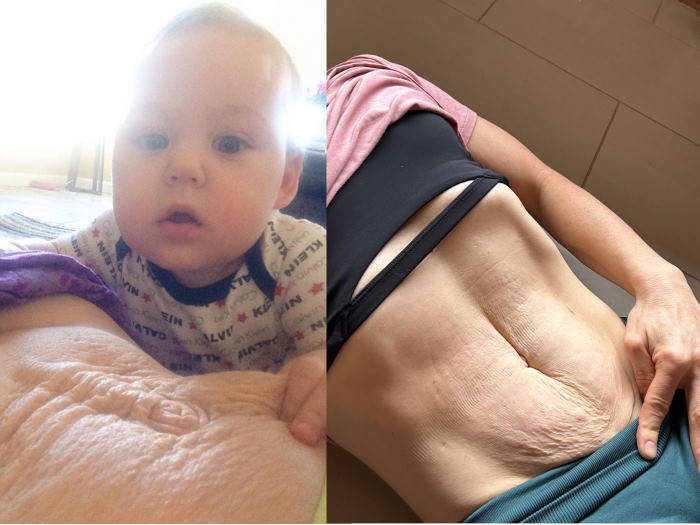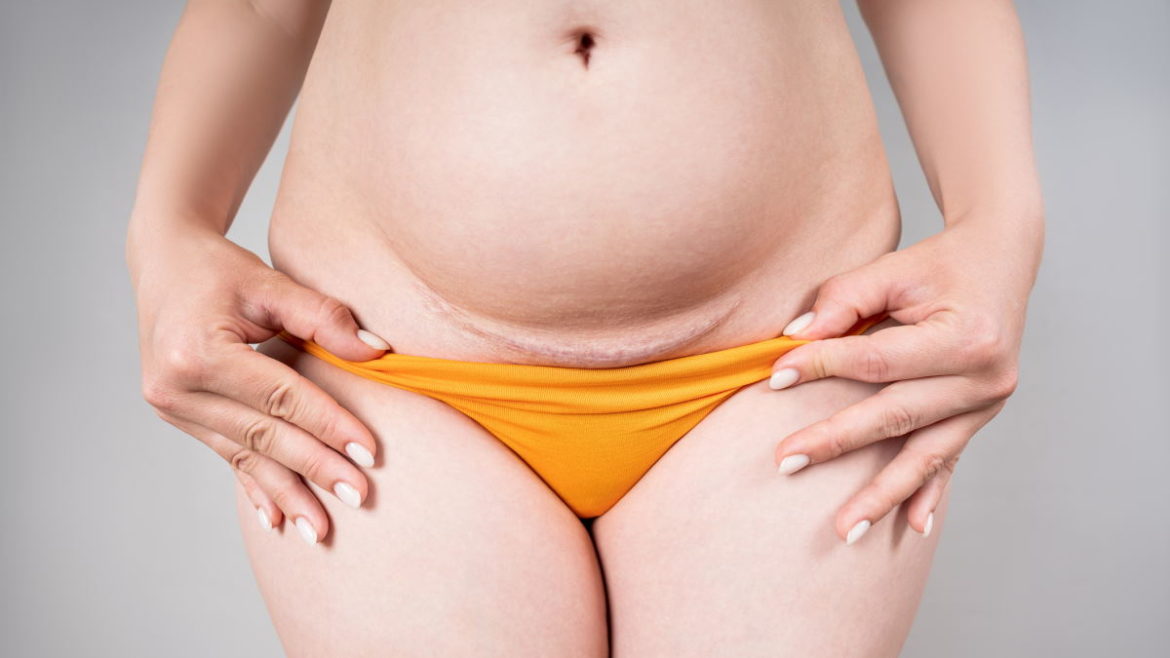You might be asking yourself, “Will my C-section shelf ever go away?” So let’s skip to the good part, and learn how to get rid of your c-section shelf.
Here’s a few simple tips to make a big difference in how your scar and tummy look. These will improve the way you feel physically in your postpartum body, too.
Before we dive in though, I need you to know that there is nothing wrong with your body if it looks like it birthed a baby. You are a warrior, and you DID NOT fail if you had a C-section!
What Is A C-Section Shelf?
It might be called a c-section shelf, a c-section pooch, or even a FUPA, but what is it exactly? Basically, it is excess skin and/or fat that hangs off your cesarean section scar, creating an almost shelf-like appearance.
The scar tissue creates tightness since it is made of collagen-dense tissue. This can form adhesions or pulling. The extra skin and fat that is left from growing a baby then hangs above this tightened skin. This causes the c-section shelf to occur.
Think about it like this. If you were to tuck in your shirt and then pull some fabric above it loose, it would create a draping effect. (Follow for more fashion tips).

You get the idea. Adhesions at the scar site are like tucking in your shirt, and the loose skin is like the draping shirt that hangs over your pants.
Does a C-Section Pooch Go Away?
A c-section shelf may never go away entirely, but it can improve drastically even without any surgical procedure.
Daily Scar Massage
The most important thing is to perform daily c-section scar massage. This will break up adhesions and free the surrounding tissue. Think of it like untucking your shirt.
You can perform c-section scar massage yourself and/or you can find a pelvic floor physical therapist to help.
Don’t start scar massage until the incision is completely healed, usually around 6 weeks postpartum.
Not only will this help improve the c-section shelf, more importantly, it will help your body function better. One study found that just two sessions of c-section mobilization had a beneficial effect on the viscoelastic properties of the c-section as well as on pain.
Nutrient-Dense Food
Eat nutrient dense and collagen rich foods to help your postpartum skin recover quicker. And don’t forget—drink plenty of water.
Try Eating The Plenty Of:
- Fruits
- Vegetables
- Bone Broth
- Meat
Time & Patience
The other remedy is time. Your postpartum body needs time to allow for the skin to regain its elasticity.

Society puts so much pressure on women to bounce back postpartum. The truth is, it is okay if your body changed. And for many moms, healing just takes some time.
Can Exercise Help Improve My C-Section Shelf?
An exercise routine can certainly help with excess fat postpartum. Deep core training can help improve the postpartum pooch, and heal diastasis recti. But no exercise on the planet will help you fix your postpartum skin. If any program tries to tell you otherwise, it is snake oil.
The Strong Like A Mother (SLAM) program works to help you find the strongest version of you. Total body workouts build strength and stamina, while also helping you heal your postpartum core and pelvic floor.
Is It Too Late Get Rid Of My C-Section Shelf?
A lot of preventative healing happens in the first six months postpartum, but it is never too late. Try c-section scar massage to help break up adhesions and improve the c-section shelf.
